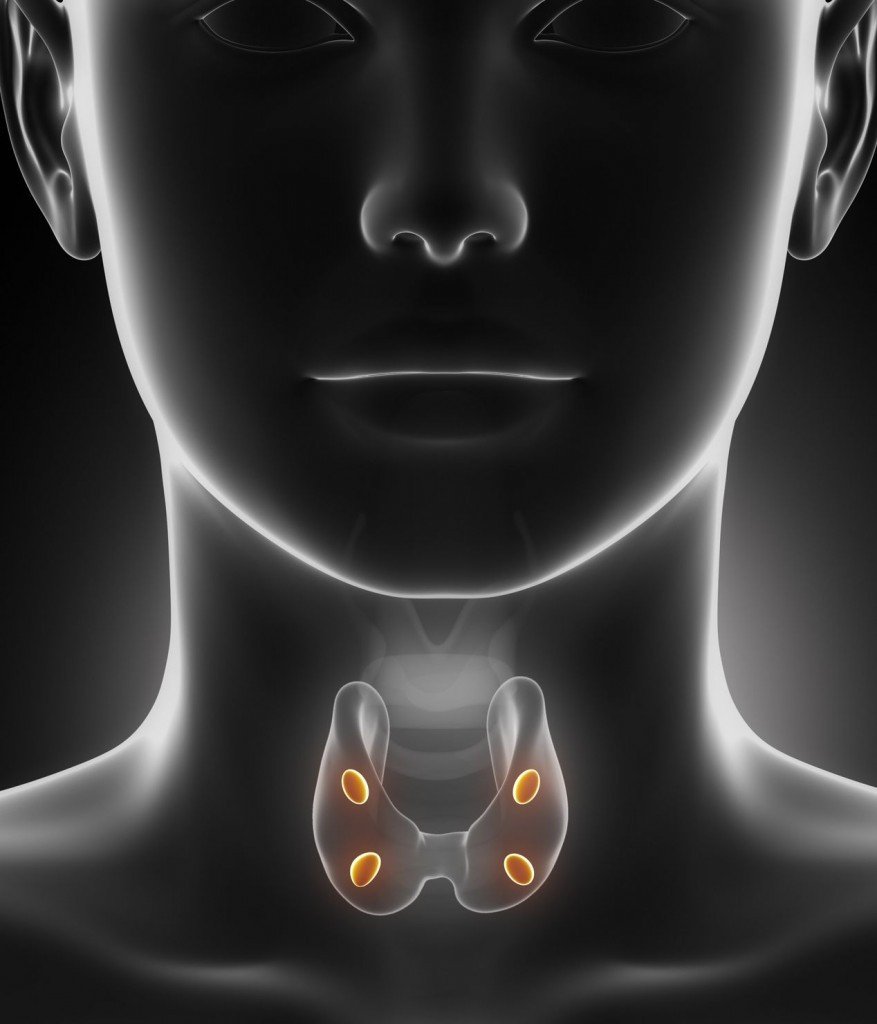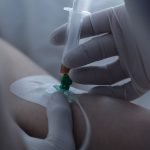Saul Marcus, ND
Graves’ disease is an autoimmune disease that produces hyperthyroidism. I got started working with Graves’ disease patients by writing a series of web pages on hypothyroidism. Without thinking much about it, I included a few paragraphs about Graves’ disease. As it turned out, there is so little information about Graves’ disease that this was all it took to get patients calling my office.
The lack of information in natural health about Graves’ disease is unfortunate, as there are natural therapies which can help patients. For the most part, it’s important to treat the person and not the disease. However, the practitioner does need to be aware of conventional treatments, diagnostic procedures, medications, and supplements used to control symptoms.
Misconceptions About Graves’ Disease
- That graves’ disease is extremely rare
There are about 3 million people in the United States living with Graves’ disease. The US incidence is 0.05%, or 136 000 people per year. Although Hashimoto’s is much more common, Graves’ should not be an obscure footnote to Hashimotos.1
- That Graves’ disease always represents a medical emergency
Although uncommon, it is possible for Graves’ disease to flair into a potentially-fatal thyroid storm. A study of the incidence of thyroid storm in Japan concluded that it occurs in about 0.22% of all thyrotoxic patients.2 Often this occurs in patients who have been non-compliant with medications.
Typical Graves’ Disease Presentation
The most common symptoms of hyperthyroidism presenting in my Graves’ patients include the following:
- Increased heart rate
- Palpitations
- Hypertension
- Anxiety
- Muscle tremors
- Heat intolerance
- Weight loss
- Goiter
- Hot, dry skin and elongated, red tongue
- Increased bowel movements
- Graves’ dermopathy (pretibial myxedema) – occurs in about 3% of patients with Graves’ disease
- Graves’ ophthalmopathy is apparent in 20-40% of cases. Severe lymphocytic infiltration of the eye muscles, which pushes the eye forward, is common in 5-10% of patients. Sometimes patients have Graves’ ophthalmopathy, but are not hyperthyroid.3
Subclinical hyperthyroidism is when thyroid hormone is within reference range, but thyroid-stimulating hormone (TSH) is low. Subclinical hyperthyroidism can persist for years and will not necessarily progress to overt hyperthyroidism.4 Often patients will report that for years they have had just a few symptoms, but that they were very minor and not something they had worried about.
Of the common symptoms listed above, some people will have all of them. However, others will just have a few. Hyperthyroidism can present along a very wide spectrum of symptoms, from almost unnoticeable to fatal.
Patients may have emotional symptoms that can be labeled as anxiety or bipolar disorder. Mental symptoms may precede physical symptoms.5
In order to prevent misdiagnoses, it’s important to be aware that not everyone with hyperthyroidism will present the same way. Don’t assume someone does not have hyperthyroidism just because he or she does not fit the textbook description.
Diagnostic Tests
Basic blood work for Graves’ disease should include TSH, thyroxine (T4), triiodothyronine (T3), and a complete blood count. TSI (thyroid-stimulating immunoglobulins) tests for a group of antibodies that cause hyperthyroidism. The test is positive in 90% of patients with Graves’ disease. Thyroid peroxidase (TPO) and thyroglobulin (TG) antibodies are often present as well.6
Hyperthyroidism can alter other lab tests. For example, you may see elevated glucose and liver enzymes.
Graves’ disease is often diagnosed by a radioactive uptake scan. This helps to differentiate Graves’ disease from other causes of hyperthyroidism.3
Endocrinologists will often encourage their patients to get a radioactive iodine uptake scan. Many patients are concerned about potential dangers from this test. I don’t tell patients to get the test or not, but rather do my best to educate them so they can make the most informed decision. I explain how most cases of hyperthyroidism are caused by Graves’ disease, which can be verified with a positive TSI, but that there are other causes of hyperthyroidism besides Graves’ disease, and in those cases the uptake scan does help with diagnosis. In my experience, sometimes endocrinologists will diagnose patients based upon blood work. Other times they don’t even test antibodies and immediately want an uptake scan.
It may take decades for the effects of radiation from an uptake scan to show clinically. However, since we don’t have long-term studies available, concerns over the safety of radioactive uptake scans are still speculative.5
Conventional Treatments & Patient Concerns
Endocrinologists typically recommend radioactive iodine treatment (RAI) in order to destroy the thyroid gland, even if symptoms are mild. Endocrinologists may not always educate their patients about the negative aspects of RAI, so if patients is come to you for a second opinion, it’s important to be able to discuss this with them.
Some things to know about RAI:
- RAI is not always successful; some people will continue to have Graves’ disease, even after RAI
- Graves’ ophthalmopathy appears to worsen in 15% of patients3
- Many patients just don’t feel well after RAI, or other health problems may appear. Patients may come to see a naturopathic doctor only after reading numerous negative, anecdotal stories online.
- It should go without saying that an autoimmune disease such as Graves’ doesn’t just happen without reason. RAI in no way is going to address the cause the Graves’ disease; causal factors will still remain after RAI.
Methimazole is the most commonly prescribed medication for controlling symptoms. Propylthiouracil is given to pregnant or breastfeeding women (since in those cases, methimazole is contraindicated). Both of these medications have numerous toxic side effects, such as pruritus, allergic dermatitis, nausea, and dyspepsia. Although rare, agranulocytosis is a severe side effect that typically occurs in the first 60 days after starting medication. Propranolol is also commonly prescribed to control blood pressure.3
Patients are often concerned about whether they need to stop their medications before starting a natural protocol. I tell them it’s fine to do both at the same time. As they get better, they can discuss lowering doses of medications with their endocrinologist.
Getting to the Cause
There is no such thing as a single protocol for all Graves’ disease patients. Everyone is different. The following are simply factors to consider:
- Poor digestive system health is often associated with autoimmune disease. Yersinia enterocolitica has been thought to be a possible trigger for Graves’ disease.7 There may also be a relationship between Graves’ disease and Helicobacter pylori.8
- Consider food allergies, especially gluten.9 Ask patients whether they are consuming artificial sweeteners, for which there is anecdotal evidence of contributing to hyperthyroidism.10
- Toxicity and lymphatic stagnation. I take a full history of any trauma that may be related to the area around the thyroid. This includes history of head and neck trauma, ear and sinus infections dental work, tonsillitis, and respiratory infections. Check for swollen lymph nodes around the neck. Do they still have their tonsils?
Natural Treatments to Control Symptoms
We have many therapies to improve the flow of blood and lymphatic circulation, including hydrotherapy and herbs that stimulate the lymphatic system, such as Trifolium pratense. Rather than defaulting to a standard list of lymphatic herbs for hyperthyroidism, I think it’s better to simply take a full history and treat according to the whole person.
One the main therapies I use is biotherapeutic drainage. This is a system related to detoxification, where compound homeopathics are used to help release stored toxins and to regulate symptoms. These are often combined with isopathics (see Case Study 2).
The following supplements can be used to control symptoms of Graves’ disease. However, a natural treatment plan should not stop here; rather, it should go deeper and attempt to treat the cause.
Lithium
Prescription lithium carbonate is well known to cause hypothyroidism. Small studies have shown that lithium carbonate is also effective at controlling symptoms of hyperthyroidism.11 There are also case reports where patients who were prescribed lithium for other reasons and went on to develop Graves’ disease remained asymptomatic while on lithium.12
Conventional medicine does not recommend lithium for the treatment of hyperthyroidism because of toxicity related to prescription lithium carbonate.
However, low-dose lithium orotate is available through several companies, typically in the amount of 5 mg per capsule. I use a product that supplies 150 mcg lithium per tablet (from vegetable culture), dosed at 1-3 tablets TID, according to severity of symptoms.
While it would be good to have clinical studies on the effectiveness of nutritional lithium for hyperthyroidism, I’m not aware of any. I was made aware of using lithium through the recommendations of the company I use. Also, Jonathan Wright has a well-written article on the uses and safety of lithium on his website. Since I was dissatisfied with the effectiveness of other hyperthyroidism supplements, I tried lithium with my clients and found it to work exceptionally well in Graves’ disease.
I did have one case of hyperthyroidism due to a thyroid nodule, and lithium had no effect on her whatsoever – she had to go back to the medical doctors.
Selenium
A dose of 200 mcg per day has been shown effective in reducing symptoms of Graves’ disease, including ophthalmopathy.13
Carnitine
L-carnitine, dosed at 2 or 4 g per day, has been shown in the scientific literature to improve symptoms of hyperthyroidism.14 However, if lithium and calming herbals are effective, patients may be spared the extra expense of additional supplement.
Herbs
Common herbs for hyperthyroidism are those used to calm down the heart, or for anxiety.
Lycopus virginicus is the most well-known of these. Melissa officinalis, Leonurus cardiaca, and other calming herbs have also traditionally been used for hyperthyroidism.
What About Iodine?
I don’t see any reason to use iodine when it may potentially exacerbate symptoms; there are also many alternative supplements that can be used safely and effectively. Studies have suggested that iodine supplementation after remission increases the chance of recurrence.7
Case study 1
Patient: 10-year-old boy
Signs & Symptoms
Allergies (controlled with loratadine)
Urinary frequency
Stomach pain
Swelling over thyroid
Dry skin
Easy bleeding
Past Medical History:
Surgery for brain tumor when 1 year old
Although 10 years old, is very small for his size
Graves’ disease diagnosed in 2011
History of frequent upper respiratory infections and antibiotics
Notable Labs:
- TSH: 0.0005 µIU/L (0.5-4.7)
- Total T4: 9.5 µg/dL (4.5-12.5)
- Total T3: 242 ng/dL (80-200)
Medications:
Methimazole: 5 mg/day
Initial Protocol:
Lithium orotate: 50 mcg TID
Selenium: 100 mcg/day
Avoid gluten, dairy, and sugar
Include goitrogenic foods, such as broccoli, cabbage, turnips, millet
Four-Month Follow-up (I would have preferred to see him much sooner, but the mother did not bring him back before now):
Since first visit, the patient has been doing well enough to reduce dose of methimazole to 2.5 mg/day
Labs:
- TSH: 0.0007 µIU/L (0.5-4.7)
- Total T4: 1.01 µg/dL (4.5-12.5)
- Total T3: 156 ng/dL (80-200)
Swelling over thyroid has decreased
Had not been sick since first visit
Skin less dry than before
Easy bleeding has improved
Has been growing more than in the past
Allergies improved with change in diet
Mother feels he was previously more “antsy”
Complains much less now about stomach pains
Case Study 1 demonstrates remarkable improvement with just a few supplements and dietary changes. Although thyroid hormone came down, TSH did not change. This is a predictable pattern. The thyroid does not have to stop auto-producing thyroid hormone for large improvement in symptoms to be seen. Rather, the thyroid simply needs to stop producing excess thyroid hormone. This is why some people have no symptoms, normal levels of thyroid hormones, but a very low TSH.
Although it was explained to her that this was just an initial protocol designed to get symptoms under control, and that more work had to be done, the mother declined a larger supplement protocol for financial reasons. Although there has been no follow-up visits since then, they do continue to stop by to pick up more lithium. Ideally, the lithium would be used to just control symptoms while also working on the deeper immune system triggers. However, I do believe the patient is better off on a small dose of nutritional lithium than a toxic pharmaceutical, which was not even doing as good a job of controlling symptoms anyway.
Case study 2
Patient: 34-year-old female
Signs & Symptoms:
Fast heart rate
Hypertension
Pounding chest at night
Nervousness; for a long time has had panic attacks which up to now have been manageable
Bruises easily
Fatigue
Loose bowel movements
Swelling over thyroid
Past Medical History:
Diagnosed with hyperthyroidism 1 month prior after emergency room visit for abdominal pain and elevated pulse (110-140 bpm)
Concerned about living above an auto-body shop for 3 years
Ovarian cyst removed 20 years prior
Notable Labs:
- TSH: 0.01 µIU/L (0.5-4.7)
- Free T4 (FT4): 3.6 ng/dL (0.8-1.8)
- Free T3 (FT3): 10.2 pg/mL (2.3-4.2)
- TPO antibodies: 19 IU/mL (<35)
- TG antibodies: 1079 IU/mL (<20)
- WBC: 8.1 (3.9-5.03)
- Neutrophils: 51.5%
- Lymphocytes: 35.4%
- Monocytes: 11.3%
- Eosinophil 1.4%
A TSI test was not ordered. Practicing in NY State, I am unable to order additional blood work. Her endocrinologist recommended a radioactive iodine uptake scan.
After discussion of the reason for the scan, she and her husband decided to try a natural protocol first.
Medications:
Propanolol: 10 mg TID
Initial protocol:
Lithium orotote: 50 mcg TID
Herbal tincture of Lycopus virginicus, Melissa officinalis, Leonurus cardiaca, Selenicereus grandiflorus: ¼ to ½ tsp TID; dosed according to symptoms
Biotherapeautic drainage protocol. This was based on labs tests (especially elevated monocytes) which suggested infection. Protocol was confirmed based on applied kinesiology testing that showed weakness in the thyroid, digestive and urinary systems.
Isopathic suppositories (one product 3 nights/wk, and another product 2 nights/wk)
Note: Isopathics remedies, made in accordance with the Enderlein philosophy, are a powerful way to modulate immune system response. They are made from non-viable fungi or bacteria and although they don’t have a direct effect, themselves, will provoke a strong response from the immune system. They can be very helpful in cases involving the immune system, such as chronic infection or autoimmune disease. The specific action of the first product was to downregulate inflammation while provoking the immune system to clear unresolved infection. The other products work similarly, although are more specific for infection. They can be combined for a synergistic effect.
Various compound homeopathics, to regulate thyroid function, balance minerals, enhance liver and kidney function, and assist lymphatic drainage; each was dosed at ¼ tsp BID. The primary purpose of these homeopathics was to open up routes of elimination and avoid a possible rough detoxification response from the isopathic remedies.
A functional stool test was also ordered.
One-Month Follow-up:
Patient has felt much better overall
Blood pressure is now normal at 108/70 mm/Hg
Heart rate: 80 bpm
Has a sore throat. This was seen as a good sign and probable detoxification response from the isopathics.
Labs:
- Intestinal lysozyme (fecal): 26 mg/100 g dry wt (normal <8)
- Alpha anti-chymotrypsin (fecal): 86 mg/100 g dry wt (normal <60)
Additions to Protocol:
Mixed homeopathic, to calm stomach
Colostrum, to reduce inflammation in GI system
Two-Month Follow-up:
Still continues to feel better, in terms of cardiovascular symptoms
No more sore throat
Bowel movements are still frequent (up to 4 times per day), but more firm than before
Still some nervousness, but has not had any panic attacks
Minor Adjustments to Protocol:
Discontinued one of the isopathic remedies
Added alpha-lipoic acid for detoxification support
Plan was to work more deeply on detoxification in upcoming months, but patient was unable to follow up, due to her busyness in moving from apartment over automobile repair shop.
Six-Month Follow-up:
Patient reported that she was symptom-free.
Ideally, there should have been a more thorough follow-up with Case Study 2. The case was never confirmed as Graves’ disease. She may very well still have subclinical hyperthyroidism and elevated antibodies. However, there are occasional roadblocks associated with working in an unlicensed state, including getting appropriate lab work ordered, and a possible unwillingness of clients to pay out of pocket and follow up if they don’t currently have symptoms. After an endocrinologist starts a patient down the path to RAI, they may be reluctant to go back to the endocrinologist after feeling better on a natural protocol.
 Saul Marcus, ND, is a 2009 graduate of the University of Bridgeport College of Naturopathic Medicine (UBCNM), and is licensed in the state of CT. He has a private practice in New York City, in which he uses primarily herbal medicine and biotherapeutic drainage.
Saul Marcus, ND, is a 2009 graduate of the University of Bridgeport College of Naturopathic Medicine (UBCNM), and is licensed in the state of CT. He has a private practice in New York City, in which he uses primarily herbal medicine and biotherapeutic drainage.
References
- Prevalence and Incidence of Graves Disease. Right Diagnosis Web site. http://www.rightdiagnosis.com/g/graves_disease/prevalence.htm. Accessed April 14, 2014.
- Akamizu T, Satoh T, Isozaki O, et al. Diagnostic criteria, clinical features, and incidence of thyroid storm based on nationwide surveys. Thyroid. 2012;22(7):661-679.
- Papadakis M, McPhee SJ, Rabow MW. CURRENT Medical Diagnosis & Treatment 2014. 53rd ed. New York, NY: McGraw Hill Professional; 2014:1003-1015.
- Donangelo I, Braunstein GD. Update on subclinical hyperthyroidism. Am Fam Physician. 2011;83(8):933-938.
- Moore EA, Moore L. Graves’ Disease: A Practical Guide. Jefferson, NC: McFarland Publishing; 2001:15.
- Yeung SC. Graves Disease Workup: Laboratory Studies. Updated March 21, 2013. Medscape Web site. http://emedicine.medscape.com/article/120619-workup. Accessed April 14, 2014.
- Rapoport B, McLachlan SM, eds. Graves’ Disease, Pathogenesis and Treatment. New York, NY: Springer; 2000:15. Endocrine Updates; Vol 6.
- Bassi V, Santinelli C, Lengo A, Romano C. Identification of a correlation between Helicobacter pylori infection and Graves’ disease. Helicobacter. 2010;15(6):558-562.
- Strieder TG, Prummel MF, Tijssen JG, et al. Risk factors for and prevalence of thyroid disorders in a cross-sectional study among healthy female relatives of patients with autoimmune thyroid disease. Clin Endocrinol (Oxf).2003;59(3):396-401.
- Hull JS. Sweet Poison: How the World’s Most Popular Artificial Sweetener Is Killing Us: My Story. Liberty Corner, NJP: New Horizon Press; 1999.
- Lazarus J, Addison G, Richards A, Owen G. TREATMENT OF THYROTOXICOSIS WITH LITHIUM CARBONATE. The Lancet. 1974;304(7890):1160-1163.
- Thompson CJ, Baylis PH. Asymptomatic Graves’ disease during lithium therapy. Postgrad Med J. 1986;62(726):295-296.
- Marcocci C, Kahaly GJ, Krassas GE, et al. Selenium and the course of mild Graves’ orbitopathy. N Engl J Med. 2011;364(20):1920-1931.
- Benvenga S, Ruggeri RM, Russo A, et al. Usefulness of L-Carnitine, a naturally occurring peripheral antagonist of thyroid hormone action, in iatrogenic hyperthyroidism: a randomized, double-blind, placebo-controlled clinical trial. J Clin Endocrinol Metab. 2001;86(8):3579-3594.





